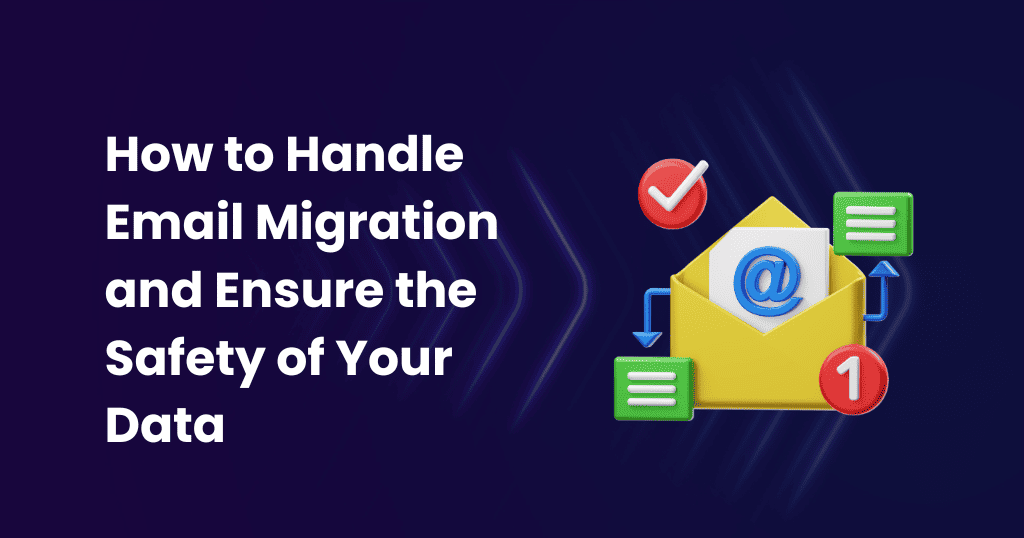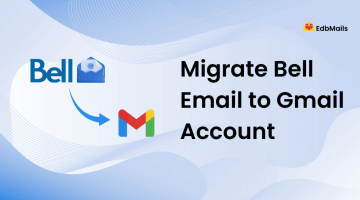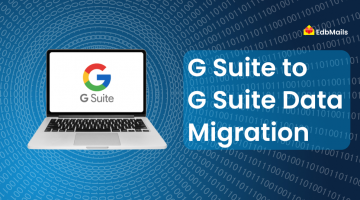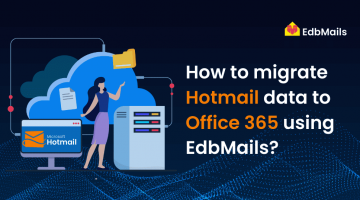In today’s digital workplace, email isn’t just communication; it’s infrastructure. According to the Radicati Group, over 347 billion emails are sent daily, making email systems critical to business operations. So, what happens when you need to migrate those thousands (or millions) of emails to a new platform?

The truth? Email migration isn’t as simple as copying and pasting files. It involves data integrity, security, compliance, and business continuity. If mishandled, you risk data loss, downtime, and chaos.
Understanding the Email Migration Process
Before jumping into tools and timelines, let’s address a key question:
What happens during email migration?
At its core, email migration is the process of moving mailboxes, calendars, contacts, and attachments from one email environment to another. But in practice, it’s far more nuanced.
Key Phases of Email Migration:
- Assessment & Planning:- Evaluate the scope, platforms involved, and potential risks.
- Data Mapping:- Identify what data should move (e.g., user mailboxes, shared mailboxes).
- Tool Selection:- Choose a reliable tool like EdbMails that ensures secure and incremental migration.
- Testing:- Run pilot tests to catch compatibility or data issues early.
- Migration Execution:- Migrate in stages or all at once, depending on the method.
- Validation & Post-Migration Checks:- Verify completeness and address any user issues.
Having a migration roadmap reduces uncertainty and ensures your IT team isn’t left scrambling mid-way.
Choosing the Right Email Migration Method
Not all migrations are created equal. Depending on your organization’s size and goals, there are different migration strategies:
| Migratio Type | Description |
| Cutover Migration | Moves all mailboxes at once (best for small orgs) |
| Staged Migration | Migrates data in batches (ideal for medium-sized businesses) |
| Hybrid Migration | Part cloud, part on-premise (used in Exchange-Office 365 scenarios) |
| Incremental Migration | Only migrates new/changed items during re-runs (supported by EdbMails) |
Pro Tip: EdbMails supports incremental migration. That means faster performance, no duplication, and less bandwidth usage – especially handy when you’re migrating in stages.
Identifying What to Migrate
Before any data is moved, take stock of what actually needs to go. This avoids unnecessary bloat and ensures relevance.
Checklist:
- User Mailboxes
- Shared Mailboxes
- System Mailboxes
- Public Folders
This step is crucial for compliance-heavy sectors like healthcare or finance, where retaining certain data is legally required.
Documenting Everything: Your Email Migration Blueprint
A common pitfall? Poor documentation. Email migration is a collaborative effort involving admins, IT staff, and end-users. Everyone needs to know what’s going where.
- Maintain a centralized list of user accounts, credentials, and permissions
- Use tools like EdbMails to auto-detect and list mailboxes.
- Document policies, such as email filters, retention rules, and compliance settings
- Save versions of migration reports for audit trails
Key Compatibility Checks:
- Is your tool compatible with your current and target platforms?
- Can it handle various file types (EDB, PST, OST, NSF, MBOX)?
- Does it support cloud and on-prem environments?
- Are there limits to mailbox size or message counts?
EdbMails, for instance, supports:
- Exchange Server (2019/2016/2013)
- Office 365
- Almost all IMAP servers (Outlook, Gmail, cPanel, Yahoo, Zimbra, etc.)
- Multiple file types such as offline EDB, OST, PST, etc.
Security Measures During Email Migration
When executing an email migration, security must be treated as a foundational element — not an afterthought. Moving sensitive email data between servers, whether from on-premises Exchange to Office 365 or between IMAP systems, can expose organizations to vulnerabilities if not handled properly. These risks include unauthorized access, data interception during transit, credential exposure, and compliance violations in regulated industries.
One of the most common causes of data loss during migration is poor handling — often a result of manual processes or tools that lack adequate security features. According to Datto, small businesses can lose up to $133 per minute of downtime caused by data loss. The cost isn’t just financial; it can erode client trust, lead to regulatory penalties, and disrupt business continuity.
To minimize such risks, organizations should select migration tools that offer enterprise-grade security protocols. A robust solution must support multi-factor authentication (MFA) to prevent unauthorized access, use secure OAuth 2.0 tokens instead of storing credentials, and apply end-to-end encryption for all data in transit and at rest. This layered approach ensures that even if one layer is compromised, other safeguards remain intact.
EdbMails follows Microsoft’s recommended security practices by using the secure Microsoft Graph API for migration and performing the process according to Microsoft’s prescribed flow. It enforces a strict no-storage policy for user credentials — Office 365 credentials are protected using OAuth 2.0 and TLS encryption during authentication, with modern authentication based on MSAL (Microsoft Authentication Library) and Microsoft Graph. Metadata used for incremental migration is stored only on the user’s local machine and encrypted with AES-256 military-grade encryption, ensuring it never leaves the customer’s environment.
Safeguarding data during email migration requires more than basic protection. It demands a comprehensive, built-in security strategy that preserves the confidentiality, integrity, and availability of your data at every stage. EdbMails’ security-first design not only minimizes external risks but also ensures compliance, data sovereignty, and complete control over sensitive information.
In short, secure email migration is not just about a password-protected tool – it’s about combining encrypted communication, advanced authentication protocols, and adherence to industry standards. With the right solution, backed by trusted architecture, your IT team can migrate with confidence and peace of mind.
Support is Not Optional – It’s Essential
Migration is rarely a simple one-click process. Issues can arise at any stage – whether due to the complexity of the migration workflow or an inadvertent error by IT administrators. That’s why it’s essential to choose a tool backed by a reliable and responsive support system.
Look for a solution that provides:
- 24/7 live chat or email support
- A comprehensive knowledge base and documentation
- Step-by-step video tutorials and guides
- Remote assistance for complex issues
EdbMails offers all these support channels, ensuring your team can migrate smoothly, resolve issues quickly, and work with complete confidence.
Conclusion: Migrate Smart, Migrate Secure
Email migration doesn’t have to be a tough task. With a clear plan, the right tools, and expert support, you can move to a better email environment without risking your data or team productivity.
If you’re considering a migration, whether from Exchange to Office 365, IMAP to Outlook, or legacy systems to the cloud, EdbMails is designed to get you there safely, smoothly, and securely.



